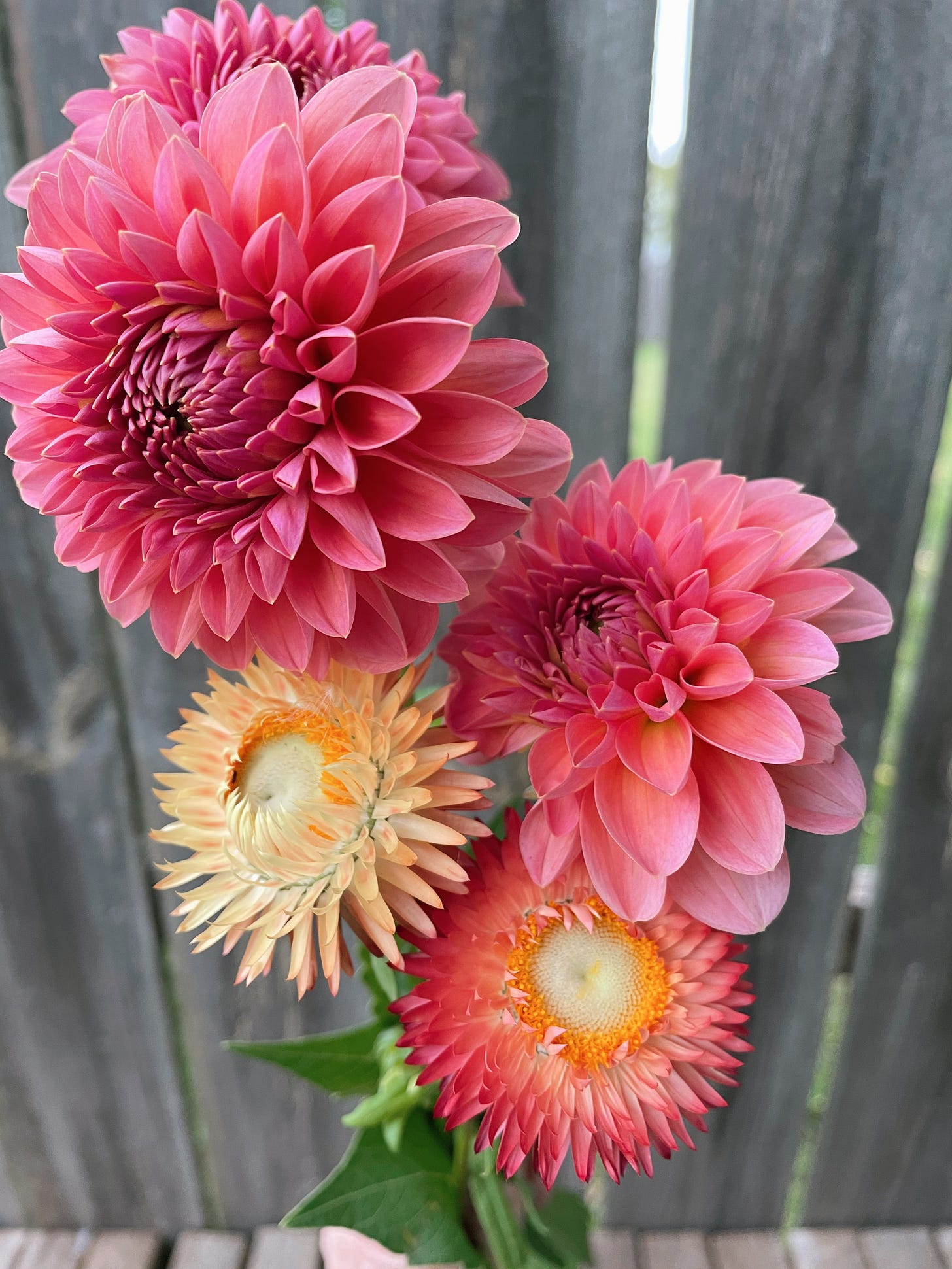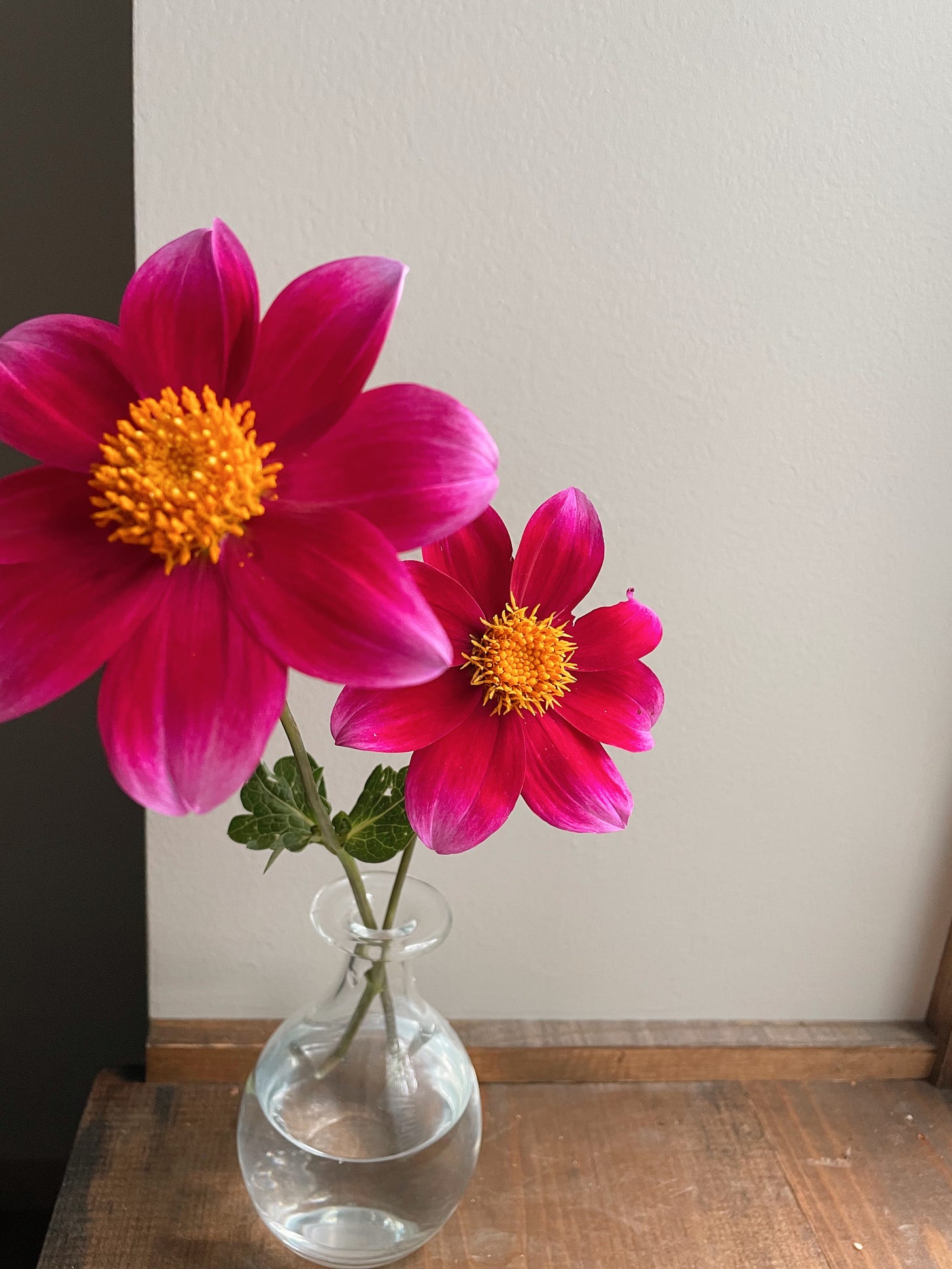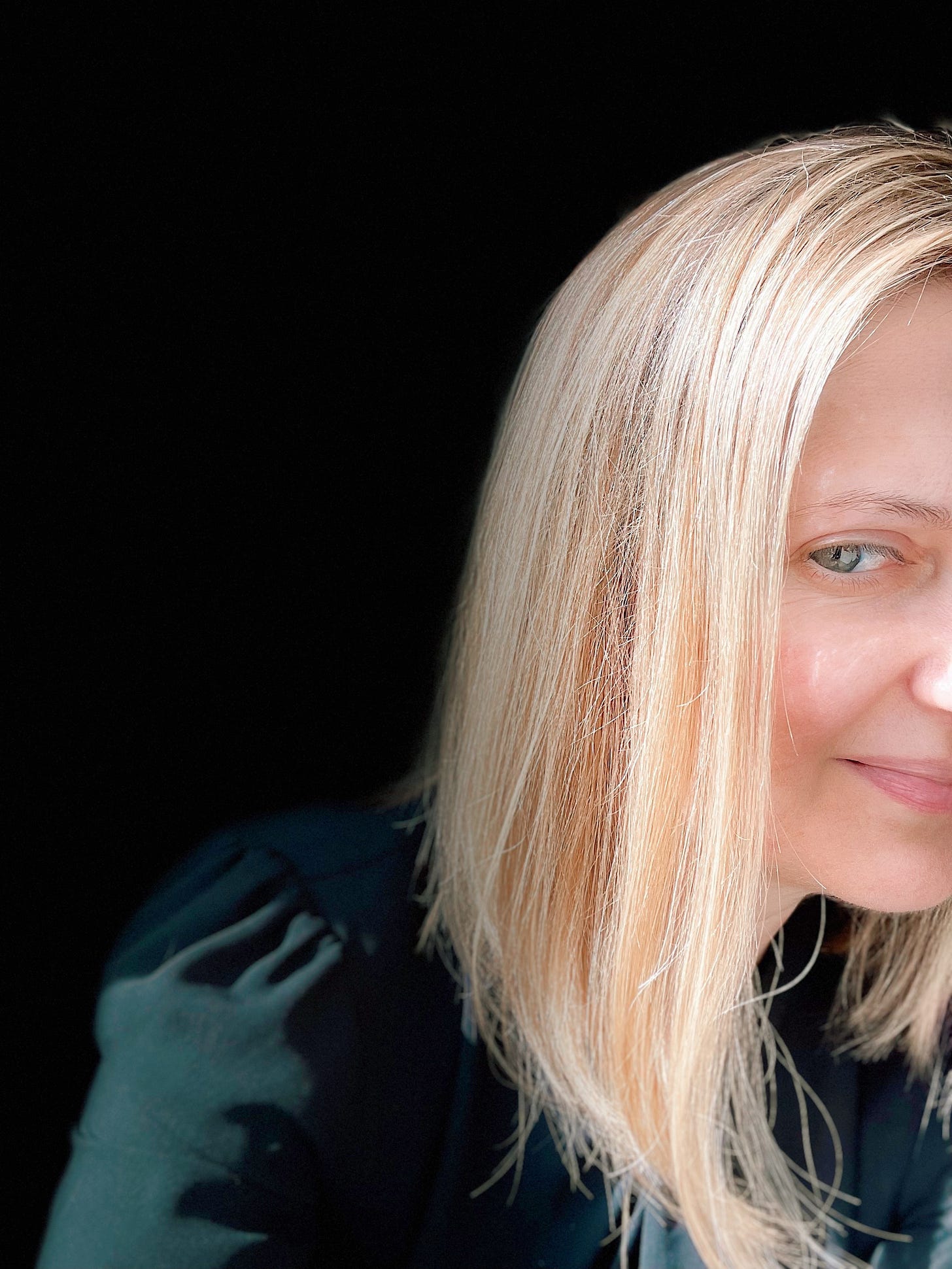Thick leaf mulch covers most garden beds, despite our warming temperatures. And while I’m hesitant to remove this layer of protection, I know it’s time. Hyacinth and daffodil necks stretch long to reach their blossom heads through the thick organic blanket of damp leaves. They tell me it’s time to prepare for spring.
It happens in three acts. Preparing for gardening (seed starting, fertilizing perennials, winter sowing), cultivating the gardens (transplanting new flowers, arranging containers), and harvesting the gardens (picking flowers for bouquets, collecting food from the kitchen garden). Act I is nearly finished, and I can hear the cue for Act II. I wait anxiously in the wings to begin the next scene.
Soon I will carry trays of burgeoning plants between the house and the kitchen garden, which spreads heroically at the back of the yard, an emblem of a winter season well past its end date. To reconcile my discontent, I reframe each step between the house and the outdoor garden as a meditation on cultivation.
And that’s where I need to be. Working intently with my hands in the soil, always keeping my eye on the ever expanding daylight and warming temperatures. As I applied a dusting of fertilizer to the base of my perennials today, I noticed delphinium shoots emerging from the loamy soil; the feverfew perked up quickly in the herb garden this past weekend, too. Equally exciting: I plan to direct sow carrots and peas very soon. Both vegetables thrive in cool temperatures.
And now for something totally different. I decided to take a break from my usual format this month to bring you a new piece unrelated to gardening. While I’ve written short essays for a while, I haven’t always shared them here, especially if they don’t relate to the practice of tending flowers and growing food. If you are looking for more flower photographs and quips about cultivating plants, don’t worry — they will be back again later this month. In the meantime, here’s a new short essay with a very different focus. I would love to hear your thoughts in the comments.
I sit in the pediatrician’s office with my soon-to-be sixteen-year-old daughter. Just a routine check-up, but we wait together for the doctor to arrive — me in a hard plastic chair with my winter coat draped over my shoulders. She, in a similar hard plastic chair, with her legs crossed casually and her charcoaled eyes shifting between the exam room door and her phone. Teenagers keep to themselves, and my daughter is no different. Still, I relish sitting beside her where I can study her closely, this almost adult who bounces between high school and dance rehearsals and frequent friend breaks. Waiting alongside her in a quiet exam room is both poignant and fleeting.
The sound of a newborn baby’s cry just beyond the exam room door interrupts the moment. Desperate chugs of wailing fill the office. On the other side of the door, in a spot not too far down the hall from us, is likely a new parent watching their tiny baby erupt in necessary pain. My heart lurches; I briefly close my eyes.
I know those early days of parenting. Hovering just beyond fond first-day-of-school memories and recollections of learning to walk, sits another, more complicated reminiscence: those early weeks after my daughter’s birth, when the world seemed fresh and fractured and incredibly irregular.
Has the parent on the other side of the wall yet encountered the frantic burn that comes from trying to soothe a baby on the cusp of a new tooth? Have they learned to hold their tongue, to just listen, as their preschooler howls about missing home when the school year begins? The skinned knees and bloody noses, yes, those are all to be expected. But here’s what can’t be predicted: the crush of watching your child charge away from their first bike without training wheels because they believe they will never accomplish two wheels, never trek around the block without you. Or, accepting a difficult truth when your child decides to apply long, overly priced fake nails the day before violin lessons. It’s true. They prefer making their own decisions.
Just beyond babyhood and a little after preschool comes a passage in life without you.
My daughter shifts in her chair. I glance at her pierced ears, her long shiny hair, her velvet pants grazing the tips of white Converse shoes. Along the sole of each foot she’s marked in pen, love yourself and be kind. I look down at my feet and the weathered brown high tops I wear to the clinic this morning. I couldn’t conjure this scene sixteen years ago. Then, I cradled her through pinched screams and produced my own darkened sobs at the doctor’s office. Exhausted and depleted. Feeling unsure. Drifting. Fragile.
We’ve traveled a long way together — swaddled mewls brought on by her hunger and exhaustion are now replaced by her poised confidence and a willingness to discover the world. I don’t miss my children as newborns, or at any stage other than the one they are right now. Don’t misunderstand me. I loved each newborn, toddler, preschooler, and so on experience. But I am equally glad we are here, waiting together (albeit silently) in a rather empty exam room; we wait for nothing more than the doctor to arrive and confirm what we both already know.
She’s made it this far.
Thanks for reading this month’s essay. As always, I would love to hear something if from today’s offering connected with you. Writing is community.
There are lots of ways to support my work. You can refer people to Roots & Vines on Substack, re-stack any portion of this essay using the Notes feature, follow me on Instagram (@roots.and.vines), or purchase my flower photography at Roots & Vines Photography.
-Betsy








Love essays. Both of them. 🩷
This is a beautiful essay that you shared about your relationship with your daughter, Betsy. Plus, your flowers are always so calming and charming.